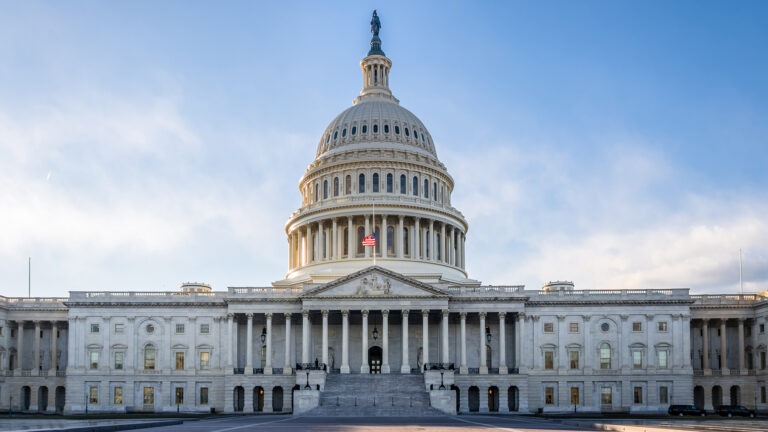Interview by Muskan Arora
The NJ Pension Fund CIO Shoaib Khan, who joined the pension fund in early 2021, is widening his investments for emerging managers. Owing to looming geopolitical concerns, back in 2022 the CIO reduced its allocation to private markets and improved their liquidity positioning. This allows them to sail smoothly in the current changing market environment. In this interview, the CIO dives deeper into manager selection, sectors he finds attractive and more.
Muskan Arora: Unlike other pension funds, you made
allocations in private markets, first, within the emerging manager’s sector.
What was something, or the few strategies, or the few sectors, that you found
very interesting to take that step?
Shoaib Khan: One of the reasons is that we were and are underweight
in our private market allocation targets. In addition to that, when we did the
research and we looked at the investment universe as we do before starting any
new program, there’s a lot of homework and a lot of data collection with a lot
of analysis to be conducted.
As part of that, we recognize that the number of investment
managers in private equity, in real estate, and also in private credit and so
forth, is fairly robust, which means that if we are going to start an emerging
manager focused effort, then we certainly would have enough managers to pick
from. If you only have a few, you can’t really have a good portfolio
construction methodology. We need to ensure that first, there is an opportunity
set. Then as a second step, is there a sufficiently large enough
investment universe.
After that work was completed, it just made sense for
us to then kick it off with the private market asset classes. That is what
we’ve done. I mean, the pension funds that started earlier, I think, certainly
had focused more on public markets and then transitioned to private markets. It
completely depends on your portfolio and on your asset allocation plan, your
objectives and constraints.
We built it with different sleeves which gave us the
flexibility to then focus on one sleeve at a time. While we do that, we also focus
on building out the next sleeve. There’s a team that focuses on real estate and
private credit, private equity, and so these teams can then focus on their
respective sleeves so that each sleeve is well constructed and reflective of
the asset class. That’s how we structured it. Those are some of the reasons why
we started out in private market asset classes.
Arora: You mentioned doing a lot of research and
executing different research with different sleeves and different teams. Could
you elaborate on the factors that you considered while doing all of that?
Khan: While there may be lots of perspectives to consider and look at for
emerging managers, for us it has to add financial value to the pension fund
portfolio. That’s the first and foremost type of analysis that we do.
When we look at the opportunity set, we have to be certain
that if we were to embark and build a portfolio, it has to add financial value.
This means looking at historical data to show that smaller emerging managers,
and by the way, that includes women owned and minority owned firms, actually, add value
when we add them into a portfolio. That’s an important part of the analysis.
Then, of course, as I said earlier, we focus on picking
robust investment firms. There of course, we have the ability to have different
parameters and different thresholds for each of the sleeves.
The parameters that we have as thresholds for private
equity may be different for private credit or real estate. When we look at
public markets, that would be very different too.
For us, for private equity and for real estate, firmwide
assets threshold was determined as appropriate is $3 billion. On a fund level,
there should have no more than fund one, two, and three, and then beyond I
would expect that they’ve graduated. Now there may be different thresholds and
different characteristics for each of the asset classes, but that’s the type of
analysis that was conducted. So the questions we look to answer through
analysis are: does it add value? Is the investment universe robust, large enough?
Is it dynamic enough?
Arora: Absolutely. How are you leveraging this
program, or this portfolio to help you combat liquidity issues and the denominator effect?
Khan: We’re in a fortunate position that we have neither problem. We do not
have the denominator problem, we did not have the denominator problem, and we
do not have a liquidity problem. We have good liquidity, and part of the reason
is that within the portfolio, in our early 2022, we had gone overweight cash
and cash equivalents. I don’t look at every other pension plan’s cash
positioning, but if you looked at it, I’m sure we’re in and around the top, I
think, in that league table if you will, in terms of cash holdings.
Now, that was a deliberate move on our part, and we
went above and beyond what we had and would normally hold. But that was because there were geopolitical
concerns. There were concerns about the market being frothy, and also there were
concerns around inflation. With concerns comes opportunities. So, if you
are concerned about certain things, you want to create greater liquidity, and
that’s what we did. Basically, what we did was improve our liquidity
positioning back in 2022.
At the same time, while you’re concerned about
inflation, central banks started to increase interest rates. Well, if rates are
going to increase and you’re holding cash, you’re going to get a higher return
on it. We manage cash through a cash management fund, which is currently around
$40 billion with the bulk of it invested in US government securities. We’ve
avoided illiquidity, or other liquidity issues so far.
Arora: How did you rebalance your portfolio to
maintain a higher level of cash? What were the asset class movements like?
Khan: What we did was we didn’t pull it all from any one area.
We had some concerns, but at the same time, we did not
necessarily see any red flags to pull back from certain public market asset
classes, specifically the US domestic asset class. We thought there was still
wind in the back with respect to the US domestic equities. In addition to that,
we thought there were opportunities for high yield. We kept our target
allocations in certain areas, which is why our performance has actually
continued to be strong but with a portfolio profile, which is in fact taking
less risk and has better liquidity. At
the same while we de-risked the portfolio, we have been able to deliver the
returns that we are looking to deliver out of that portfolio.
Again, being underweight to private market asset classes
wasn’t a decision that was made in 2022. We had been underweight going into
that. When you look at 2020, ’21, ’22, in fact, we didn’t allocate a lot of
capital in private equity and private credit in ’21 and ’22. That was part of
the reason and what that leaves us with is now a lot of dry powder. Now that
valuations are lower, opportunity sets are changing, we can actually put that
capital to work. That’s how we did it. Where we did have underweight positions,
it was in certain public market securities including emerging markets as an
example. By the way, emerging markets until very recently, was an underperformer versus
domestic US equities, or developed markets equities when you compare it. That’s
how we maintain that portfolio. We made certain calls based on a changing
landscape. We kept it a balanced
portfolio with good liquidity profile and dry powder to be utilized in the
future.
Arora: You mentioned keeping an eye out for certain
sectors when it comes to US presidential elections. I am curious to know which
sectors you are talking about?
Khan: In the US, on the public markets side, we have an internal investment
team. A lot of our public market assets are actually internally managed. A lot
of those are passively managed. If you think about it, there is alpha in
markets that are inefficient. For example, emerging markets, international,
small caps, there is alpha to capture because those markets are less efficient as
compared to the US market. There we will utilize active investing and we will
utilize investment advisors.
On the fixed income side, a fair amount is passive. We
invest in treasuries, we invest in investment grade, we invest in high yield.
High yield, there could be value in terms of creating alpha by having some
active management. We have both passive and active there as well. Of course, in
certain countries, when you talk about emerging markets, it’s nice to have local
boots on the ground. It’s good to have the local knowledge, and while we can
travel, as you know, traveling isn’t the easiest thing to do. That makes it
harder. Sometimes it makes sense that we would utilize advisors.
Rather than trying to make sector calls, we don’t
replicate, and prefer to optimize generally on our passive investing, but it’s
not making sector calls. It’s trying to match a benchmark return, if you will.
Then where we thing there is value in active investing, we generally will
involve an investment advisor who will then utilize their resources, their
teams, and we’ll then look to create alpha through there.
Whether it’s private or public, we have been underweight
some of the problem areas, which were effectively commercial real estate especially
offices and retail. At least in the US but also other places post-COVID. When
people are working from home, when people have hybrid work schedules that has
impacted the office and the retail environment. Of course, retail’s been
impacted by e-commerce too. We’ve been underweighted there. That said, we
continue to allocate in real estate.
Data centers are a growing area and we have been
active there especially given the growth of the need for data and AI. Data
centers are an area, if you want to think of that as a sub-sector or an area of
focus within real estate. Medical offices are an area that we’ve been focused
on. Within private equity we continue to
see opportunities within buyouts and growth, we also continue to see some
opportunities within venture capital.
Rather than trying to identify specific and individual
situations, what we do is allocate capital to funds. Those funds then are
diversified into various sectors. We certainly look to avoid certain sectors
that may have less opportunities available to them, or are higher risk. As you
know, it’s not only about returns, but about risk and returns combined. That’s
why we try to construct a diversified portfolio where we can capture returns while
reducing risk.
Arora: What is something that you’re doing which is
contrary to other allocators in the emerging market space, and what do you
think are the tools required to do that?
Khan: I think emerging markets is going to be an important area for us. It’s
going to be not just for us, but for most investors. There are concerns and
there are opportunities that we look at. In September I’ll be in India and will
try to gain knowledge, but this will be a business trip, traveling for work
because there are opportunities and to explore there. Especially with the new
elections out of the way and Modi being re-elected. Now, that doesn’t necessarily
mean that in the next year or two that we would increase our exposure
significantly. It may well be the case if the right opportunities are there.
I’m not trying to say yes or no, but rather that we are looking to explore more
and more in areas where the market and opportunity set is expanding.
Good governance, good regulations, good laws and
protections in place are the factors we are eyeing in EM sector. Good IP
protections so that when you invest in a venture capital firm there are all
good IP laws in place to protect those interests and those IP assets. Then of
course we always look at currency. For us, we always have to convert whatever
currencies back to USD.
A lot of times we’re investing in dollar-denominated
investments, but where we not, we want to convert that and make sure that the
returns when they convert it back, when you take the currency impact out of it,
still then is competitive versus the risk that we’re taking. For us, USD is the
reference currency. All of those factors are what we take into consideration.
Again, I don’t think there’s anything unique that we’re doing.
We also utilize what I would call manager of managers
or program partners that have offices, because again, it’s hard to travel lots
of times. We utilize program partners that have offices in Hong Kong or in
Mumbai or in Australia and that have teams on the ground, or in Korea or in
Japan. We utilize those resources as well, and again, that’s not unique, but
that’s, again, trying to gain as much information and data gathering from those
individuals and those groups that we work with as well.
Arora: In the emerging market space, while looking for managers, what are
the few red and green flags that you look out for?
Khan: We say, okay, where in emerging markets are the opportunities? How
then do we take that and diversify that portfolio? We’re always looking for a
diversified portfolio to add some protection and of course, to benefit from
those returns that diversified portfolios deliver. One is determining where in
emerging markets are the risk and returns.
Then the question is, what’s the universe? Like
emerging managers, what’s the universe of investment managers? What is the
track record? As some of these are younger markets that haven’t been around as long
as the international developed or the US market, or Canada and so forth. That’s
what we look at. Is there a sufficiently robust universe of investment managers
that we could allocate to those who have institutional talent with experience?
Now, that doesn’t mean that they must have necessarily
been running that firm for the last 10 years. As long as we can look at the
track record and feel they are bringing to the table has value. We tend to
think take more time in general within emerging markets.
Then you want to make sure because it’s relatively a
growing area, there is this fight for human talent as well. There’s of course
this demand for capital, but for capital to do well, you need good human talent.












